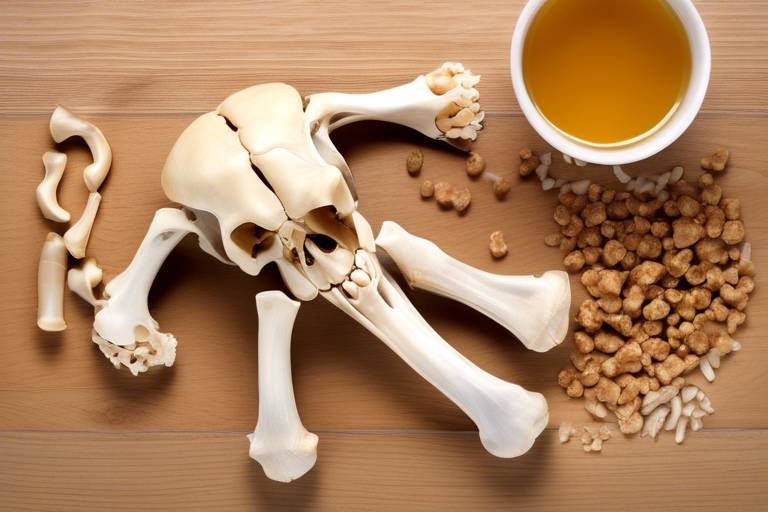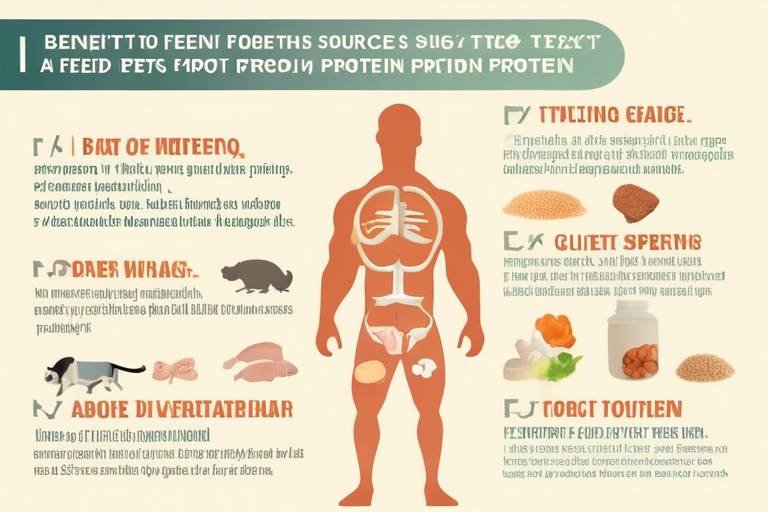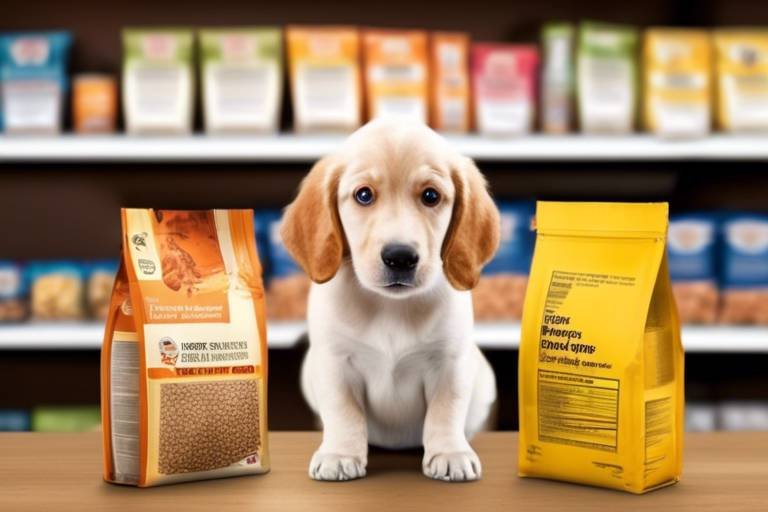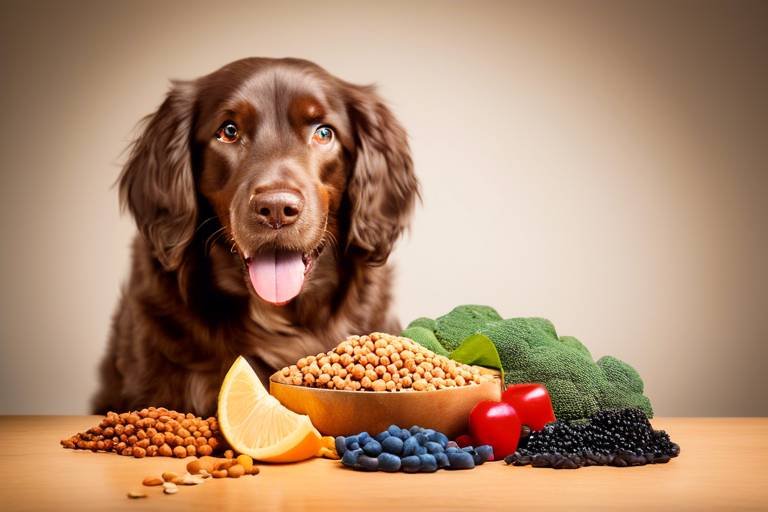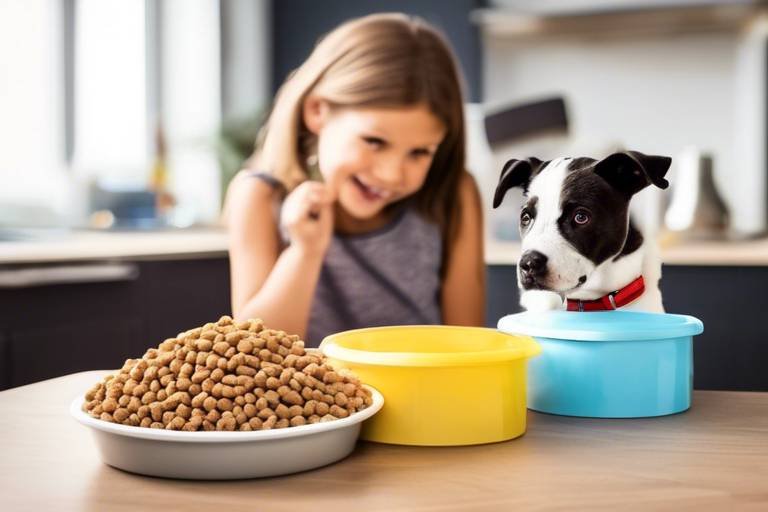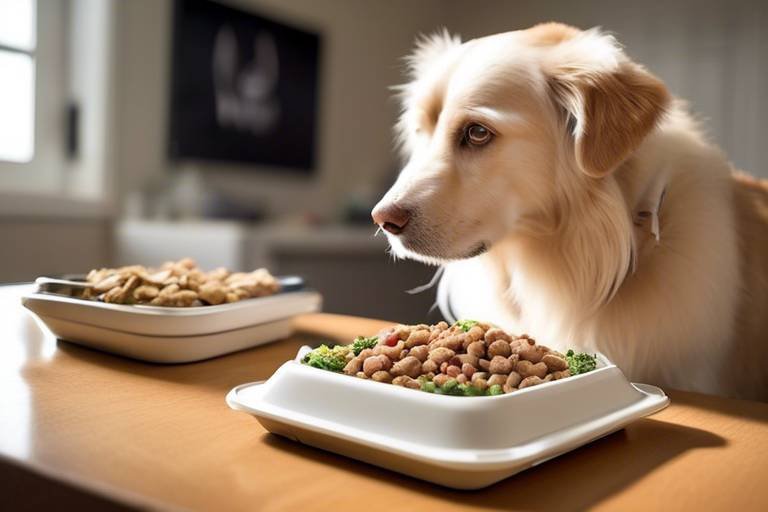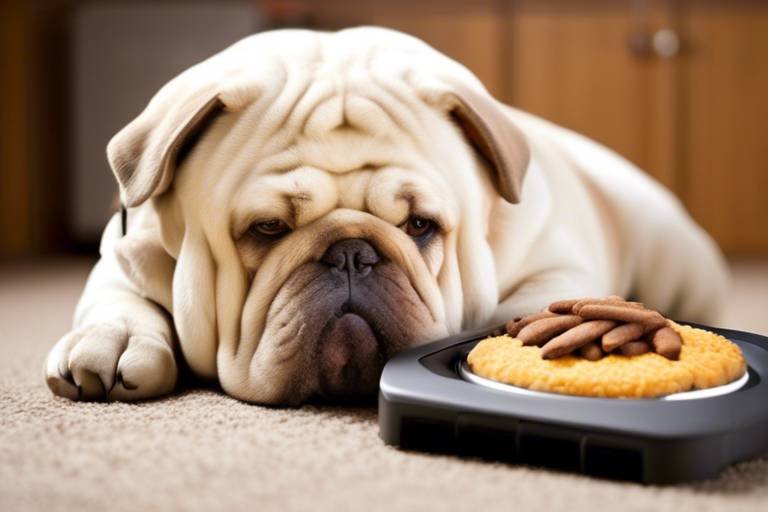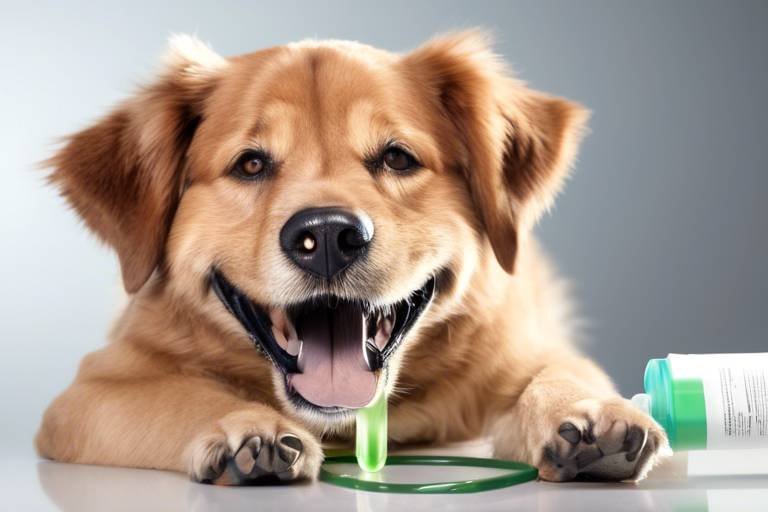The Benefits of Raw Bones for Pet Health
Welcome to the fascinating world of pet nutrition! If you’re a pet owner, you might have heard whispers about the amazing benefits of incorporating raw bones into your furry friend's diet. But what’s all the fuss about? Well, let me tell you, raw bones are not just a tasty treat; they’re a powerhouse of nutrients that can significantly enhance your pet's health and well-being. Imagine your dog or cat happily gnawing on a bone, all the while reaping the benefits of improved dental health, better digestion, and a balanced intake of essential nutrients. In this article, we’ll dive deep into the numerous advantages of raw bones, explore how they can be a game-changer for your pet’s health, and provide you with the knowledge to make informed decisions. So, grab a comfy seat and let’s get started!
First things first, let’s talk about the nutritional value of raw bones. These natural treats are not just for chewing; they are packed with essential nutrients that can contribute to a balanced diet. Raw bones are an excellent source of calcium, phosphorus, and various trace minerals that play a crucial role in your pet's growth and overall health. Think of them as nature's multivitamins, providing your pet with what they need to thrive. For instance, calcium is vital for strong bones and teeth, while phosphorus supports energy production and cellular function. When you feed your pet raw bones, you're not just giving them a snack; you're providing a nutritional boost that can help them lead a healthier life.
Now, let’s chew on another significant benefit: dental health. Just like humans, pets can suffer from dental issues, including plaque buildup and gum disease. Chewing on raw bones can help naturally clean your pet's teeth, acting like a toothbrush that scrubs away plaque and tartar. Imagine your dog having a mini dental appointment every time they enjoy a bone! This natural chewing action promotes healthy gums and fresh breath, making your pet’s smile not just adorable but also healthy. It's a win-win situation!
Speaking of dental health, regular chewing on raw bones can significantly lower the risk of gum disease, which is a common issue in pets. Gum disease can lead to serious health complications if left untreated, affecting not just oral health but overall well-being. By incorporating raw bones into your pet's routine, you’re taking proactive steps to prevent this condition. It’s like giving your pet a shield against dental problems!
Being aware of the early signs of gum disease is essential for prevention. Look out for symptoms such as:
- Bad breath
- Swollen or bleeding gums
- Difficulty chewing
- Loose teeth
If you notice any of these signs, it’s time to take action. Incorporating raw bones into your pet's diet can be an effective measure to combat these issues.
When it comes to selecting the right bones for your pet, it’s crucial to consider factors like size, type, and cooking methods. Not all bones are created equal, and some may pose risks. For example, cooked bones can splinter and cause choking hazards, while raw bones are generally safer. Always choose bones that are appropriate for your pet's size and chewing habits to maximize benefits and minimize risks.
Understanding the right practices for feeding raw bones is key to ensuring your pet's safety. Here are some essential guidelines:
- Always supervise your pet while they're chewing on bones.
- Choose bones that are large enough to prevent swallowing.
- Consult your veterinarian for recommendations specific to your pet.
By following these guidelines, you can help prevent choking hazards and digestive issues, allowing your pet to enjoy their bones safely.
But wait, there’s more! Raw bones can also play a significant role in improving your pet's digestive health. They provide natural enzymes that aid in digestion and promote healthy gut flora, which is essential for nutrient absorption. Think of raw bones as a natural probiotic for your pet, helping to keep their digestive system in top shape. A happy gut means a happy pet!
Don’t forget about the bone marrow! This delicious treat is rich in nutrients and fats that can enhance your pet's energy levels and overall health when consumed in moderation. It’s like a little energy booster packed inside the bone, giving your pet that extra pep in their step.
While raw bones offer many benefits, it’s important to be aware of potential risks. Issues such as splintering or choking can occur if bones are not chosen or fed properly. Always ensure you’re providing safe options and monitor your pet closely during chewing sessions.
Before introducing raw bones into your pet's diet, it’s wise to consult with a veterinarian. They can provide tailored advice based on your pet’s specific health needs, ensuring that your furry friend enjoys the health benefits of raw bones safely. Remember, a little guidance goes a long way in keeping your pet healthy and happy!
1. Can all pets eat raw bones?
Not all pets can safely consume raw bones. It's essential to consult with your veterinarian to determine if raw bones are appropriate for your pet's specific health needs.
2. How often should I give my pet raw bones?
The frequency of giving raw bones can vary based on your pet's size and chewing habits. Generally, a few times a week is sufficient, but always consult your vet for personalized recommendations.
3. What types of bones are safe for pets?
Raw bones that are large enough to prevent swallowing and do not splinter, such as beef or lamb bones, are generally safe. Avoid cooked bones as they can splinter.
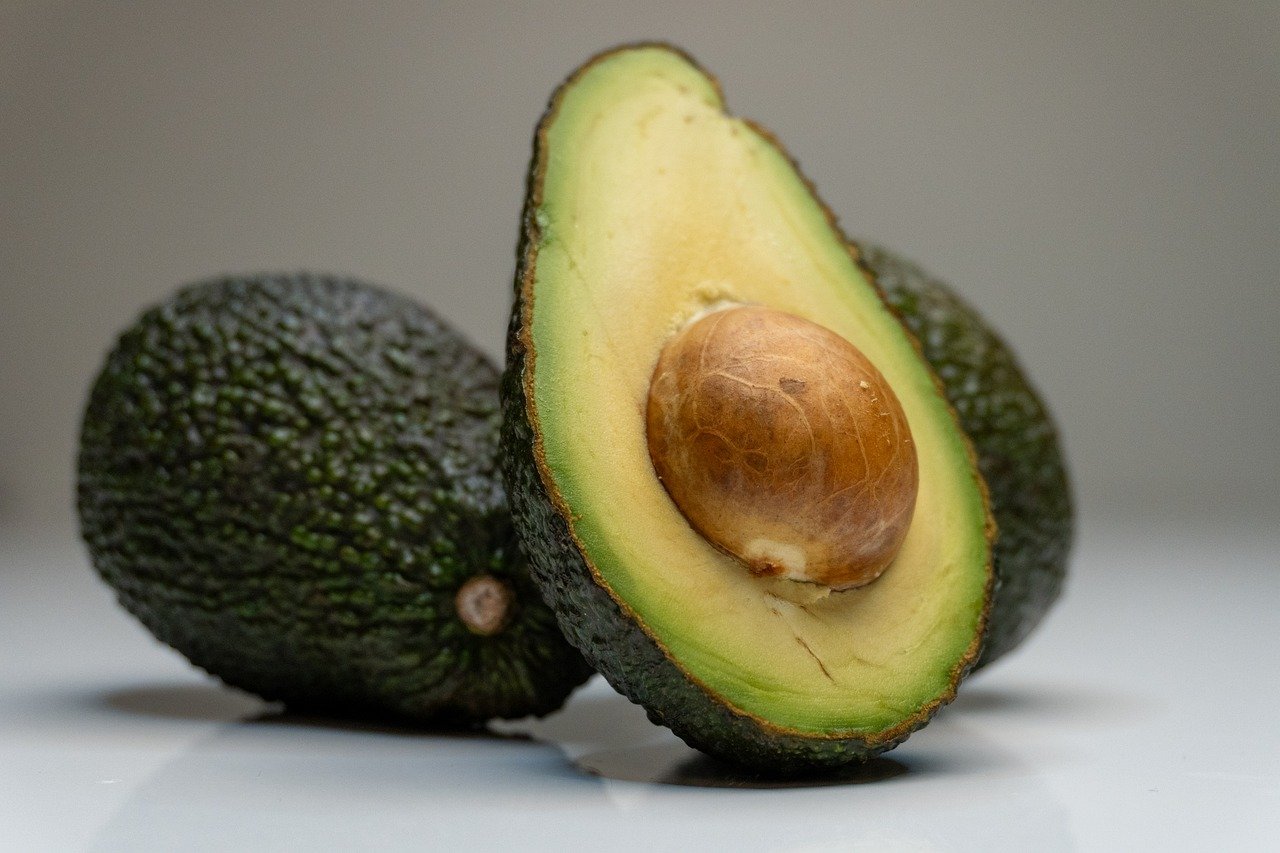
Nutritional Value of Raw Bones
This article explores the numerous advantages of incorporating raw bones into your pet's diet, highlighting their nutritional value, dental benefits, and overall impact on pet health and well-being.
When it comes to the nutritional value of raw bones, these natural treats are nothing short of a treasure trove for your furry friends. Raw bones are packed with essential nutrients that contribute to a well-rounded diet, promoting not only growth but also overall health. For instance, they are an excellent source of calcium and phosphorus, two minerals crucial for maintaining strong bones and teeth. Just like humans need calcium for bone health, pets require it in their diets to support their skeletal structure.
Moreover, raw bones provide trace minerals that are vital for various bodily functions. These nutrients can help enhance your pet's immune system, ensuring they stay healthy and active. Think of raw bones as nature's multivitamins—delivering a spectrum of nutrients in a single, enjoyable chew. To give you a clearer picture, here's a quick overview of the key nutrients found in raw bones:
| Nutrient | Benefits |
|---|---|
| Calcium | Essential for strong bones and teeth |
| Phosphorus | Supports energy production and bone health |
| Trace Minerals | Boosts immune function and overall vitality |
Additionally, raw bones contain collagen, a protein that aids in joint health, making them particularly beneficial for older pets or those with joint issues. The act of chewing on raw bones also stimulates the production of saliva, which not only helps in digesting food but also aids in the absorption of these vital nutrients. So, when you think about it, giving your pet raw bones is like offering them a delicious way to boost their health while satisfying their natural chewing instincts.
It's important to note that not all bones are created equal. The type of bone, its size, and the age of your pet all play a significant role in the nutritional benefits they can derive from chewing. Always choose raw bones that are appropriate for your pet's size and chewing habits to ensure they receive the maximum benefits while minimizing any risks. In conclusion, incorporating raw bones into your pet's diet can be a game-changer, providing them with essential nutrients that support their health and happiness.
Chewing on raw bones helps to naturally clean your pet's teeth, reducing plaque and tartar buildup while promoting healthy gums and fresh breath.
Regular chewing on raw bones can significantly lower the risk of gum disease, a common issue in pets that can lead to serious health complications.
Recognizing early signs of gum disease, such as bad breath and swollen gums, can help you take preventive measures with raw bones.
Selecting appropriate bones for your pet is crucial; consider size, type, and cooking methods to ensure safety and health benefits.
Understanding the right practices for feeding raw bones can help prevent choking hazards and digestive issues in your pets.
Raw bones can aid in digestion, providing natural enzymes and promoting healthy gut flora, which is essential for nutrient absorption.
Bone marrow is rich in nutrients and fats that can enhance your pet's energy levels and overall health when consumed in moderation.
While raw bones offer many benefits, it's important to be aware of potential risks, such as splintering or choking, and how to mitigate them.
Before introducing raw bones into your pet's diet, consulting with a veterinarian can provide tailored advice and ensure the health and safety of your furry friend.
- Can all pets eat raw bones? - Not all pets are suitable candidates for raw bones. Always consult your veterinarian first.
- How often should I give my pet raw bones? - Moderation is key. Too many bones can lead to digestive issues.
- What types of bones are safe for my pet? - Always choose raw bones that are appropriate for your pet's size and chewing habits.
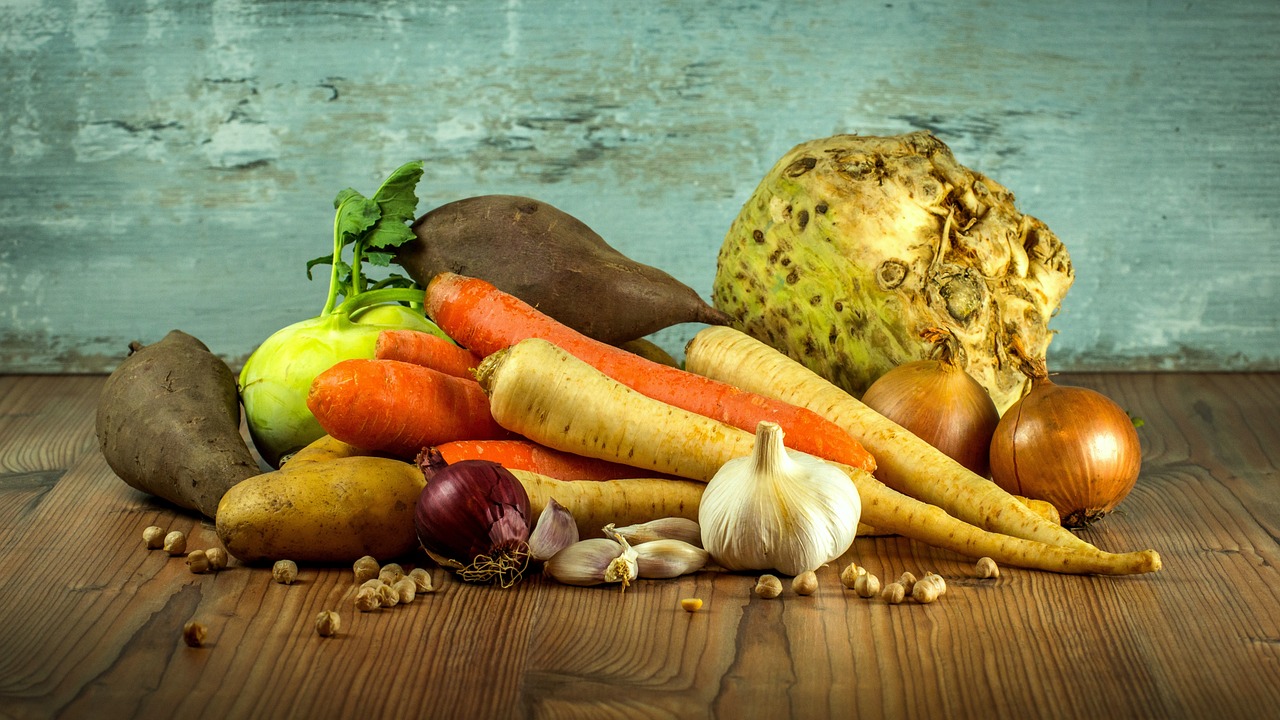
Dental Health Benefits
When it comes to your pet's health, oral hygiene is often overlooked, yet it's just as vital as a balanced diet or regular exercise. One of the most natural and effective ways to maintain your furry friend's dental health is through the incorporation of raw bones into their diet. Chewing on raw bones not only satisfies your pet's instinctual urge to gnaw but also serves a dual purpose: it acts as a natural toothbrush! Imagine your pet happily chomping away, all while reducing plaque and tartar buildup. It's a win-win situation!
As your pet gnaws on these bones, they engage in a vigorous chewing action that scrapes away at the surfaces of their teeth. This mechanical action helps to dislodge food particles and prevents the formation of plaque, which can lead to more serious dental issues down the line. Here are some key benefits of raw bones for dental health:
- Reduces Plaque and Tartar: The abrasive texture of raw bones naturally cleans teeth, making it difficult for plaque to accumulate.
- Promotes Healthy Gums: Chewing stimulates blood flow to the gums, reducing the likelihood of gum disease.
- Freshens Breath: By removing food debris and plaque, raw bones can help combat bad breath.
Regularly incorporating raw bones into your pet's routine can significantly lower the risk of developing gum disease, a common yet serious condition that could lead to pain, tooth loss, and even systemic health issues if left untreated. Just like us, pets can suffer from the consequences of poor dental hygiene, which is why it's crucial to take preventive measures.
Gum disease is a sneaky adversary; it often starts with subtle signs that can easily be overlooked. By the time you notice your pet's bad breath or swollen gums, the problem may have already escalated. Regular chewing on raw bones can be a proactive approach to maintaining your pet's oral health. It's like giving them a natural defense against the buildup of harmful bacteria in their mouth.
Being vigilant about your pet's dental health is essential. Here are some early signs of gum disease to watch for:
- Bad Breath: A sudden change in your pet's breath can indicate an underlying issue.
- Swollen Gums: Red or inflamed gums are often a sign of gum disease.
- Excessive Drooling: If your pet is drooling more than usual, it may be a sign of discomfort.
If you notice any of these symptoms, it's a good idea to consult your veterinarian for further evaluation. Catching gum disease early can save your pet from unnecessary pain and complications.
Selecting the right bones for your pet is crucial. Not all bones are created equal! When choosing raw bones, consider the following factors:
- Size: Ensure the bone is appropriate for your pet's size to prevent choking hazards.
- Type: Opt for bones that are specifically designed for chewing, such as beef or lamb bones.
- Cooking Methods: Always feed raw bones; cooked bones can splinter and pose serious risks.
By understanding these guidelines, you can maximize the health benefits of raw bones while minimizing any potential risks. Remember, a little bit of caution goes a long way in ensuring your pet's safety and happiness!
It's essential to familiarize yourself with some basic safety practices when feeding raw bones to your pet. Always supervise your dog during chewing sessions, and regularly check the bones for signs of splintering or excessive wear. If you notice any pieces breaking off, it's best to remove the bone to prevent choking or digestive issues. Additionally, consult your veterinarian to determine the best types and sizes of bones for your individual pet's needs.
Here are some common questions pet owners have about the dental health benefits of raw bones:
- Can all pets eat raw bones? - Not all pets can safely consume raw bones. Consult your veterinarian to determine what’s best for your pet.
- How often should I give my pet raw bones? - It depends on your pet's size and chewing habits. Generally, a few times a week is sufficient.
- What types of bones are safest? - Large, raw bones from beef or lamb are typically safer than smaller or cooked bones.
Incorporating raw bones into your pet's diet can be a game-changer for their dental health. Not only do they provide essential nutrients, but they also promote a healthy mouth, fresh breath, and overall well-being. So why not give your furry friend the gift of a healthier smile today?
Preventing Gum Disease
Gum disease is a sneaky little villain that can wreak havoc on your pet's health if left unchecked. Just like humans, our furry friends can suffer from plaque buildup and gum inflammation, which can lead to more serious issues down the line. One of the most effective ways to combat this is by incorporating raw bones into their diet. Think of raw bones as nature's toothbrush—an enjoyable way for your pet to maintain their dental hygiene.
When your pet gnaws on a raw bone, the mechanical action of chewing helps to scrape away plaque and food particles that accumulate on their teeth. This not only reduces the chances of gum disease but also keeps their breath fresher. Imagine your dog happily chewing away, and with each bite, they're fighting off bad breath and tartar! It’s a win-win situation that can lead to healthier gums and teeth.
But what should you look out for? Recognizing the early signs of gum disease can be crucial for your pet's well-being. If you notice any of the following symptoms, it might be time to step up their raw bone intake:
- Bad Breath: A little doggy breath is normal, but if it smells like something died, you might have a problem.
- Swollen Gums: If your pet's gums appear red or swollen, it’s a sign that they might be suffering from gum disease.
- Excessive Drooling: While some drool is expected, an increase can indicate dental issues.
- Pawing at the Mouth: If your pet is constantly pawing at their mouth, it could be a sign of discomfort due to gum problems.
By regularly incorporating raw bones into your pet's diet, you can significantly reduce the risk of these dental dilemmas. However, it’s essential to choose the right bones. Opt for bones that are appropriate for your pet’s size and chewing habits. For instance, large dog breeds can handle larger bones, while smaller breeds might need something more manageable. Always supervise your pet while they enjoy their bone to ensure they’re chewing safely and not swallowing large pieces that could lead to choking.
In conclusion, preventing gum disease in pets is not just about the occasional trip to the vet; it’s about establishing a routine that includes healthy chewing habits. With raw bones, you’re not just treating your pet; you’re investing in their long-term health and happiness. So go ahead, let them chew their way to better dental health!
Signs of Gum Disease
Recognizing the early in your pet is crucial for maintaining their overall health. Just like us, our furry friends can suffer from dental issues that may lead to more serious health complications if left untreated. One of the first indicators of gum disease is bad breath. If your pet's breath is less than pleasant, it might be time to take a closer look at their dental hygiene. This odor often stems from the buildup of plaque and bacteria, which can lead to inflammation and infection in the gums.
Another common sign to watch for is swollen or bleeding gums. If you notice that your pet's gums appear red, swollen, or bleed when they chew their food or toys, it’s a clear indication that they may be suffering from gum disease. Additionally, you might observe that your pet is reluctant to eat or shows signs of discomfort while chewing. This could be due to pain in their mouth, which can arise from inflamed gums or loose teeth.
Other symptoms include excessive drooling and difficulty in chewing, which can be distressing for both you and your pet. In some cases, you may even see pus or discharge around the gums, indicating a more severe infection that needs immediate attention. If your pet is displaying any of these signs, it's essential to take action quickly. Regular dental check-ups and incorporating raw bones into their diet can help mitigate these issues and promote better oral health.
To summarize, here are some key signs of gum disease to keep an eye out for:
- Bad breath
- Swollen or bleeding gums
- Reluctance to eat or chew
- Excessive drooling
- Pus or discharge around gums
Being proactive about your pet’s dental health can save them from pain and discomfort in the future. Regularly offering raw bones not only helps to clean their teeth but also strengthens their gums, making it a win-win for your furry friend!
How to Choose Bones
Choosing the right bones for your pet is not just a matter of grabbing the first thing you see at the store. It’s essential to consider several factors to ensure that the bones you select are safe and beneficial for your furry friend. First and foremost, size matters. You want to choose bones that are appropriate for your pet’s size; a small dog shouldn’t be chewing on a gigantic beef bone, as it could lead to choking or digestive issues. Conversely, larger dogs might need something more substantial to satisfy their chewing instincts.
Next, the type of bone is equally important. There are generally two categories of bones you can consider: raw bones and cooked bones. Raw bones are typically safer, as cooking can make bones brittle and prone to splintering, which can cause serious harm to your pet's digestive tract. So, when you're at the store or butcher, look for bones that are labeled as raw. Additionally, bones from larger animals like beef or bison tend to be sturdier and less likely to splinter compared to chicken bones, which are much smaller and can break apart easily.
Another critical factor is the bone's source. Ideally, you should choose bones from reputable suppliers who prioritize animal welfare and provide high-quality products. This ensures that the bones are free from harmful additives and chemicals. If you’re unsure, don’t hesitate to ask your veterinarian for recommendations on where to find safe bones for your pet.
Lastly, it’s wise to monitor your pet while they enjoy their bones. This way, you can intervene if they start to chew off small pieces that could pose a choking hazard. Remember, the goal is to provide a fun and nutritious experience for your pet, not to create a dangerous situation. By keeping these factors in mind, you can confidently choose bones that will contribute to your pet's health and happiness.
- Can all pets eat raw bones?
Not all pets can safely consume raw bones. It's essential to consult with your veterinarian, especially if your pet has existing health issues or dietary restrictions. - How often should I give my pet raw bones?
It's generally safe to offer raw bones a few times a week, but moderation is key. Too many bones can lead to digestive issues. - What should I do if my pet gets sick after eating a bone?
If your pet shows any signs of discomfort or illness after consuming a bone, contact your veterinarian immediately for guidance.
Bone Safety Guidelines
When it comes to feeding your pet raw bones, safety should always be your top priority. While these bones can offer fantastic health benefits, improper handling or selection can lead to serious issues. Think of it like crossing a busy street; you wouldn’t just dash across without looking, right? The same principle applies here. To ensure a safe and enjoyable experience for your furry friend, keep the following guidelines in mind:
- Choose the Right Size: Always select bones that are appropriate for your pet's size. A small dog should not be chewing on a massive beef bone, as it can lead to choking hazards. Conversely, larger dogs can handle more substantial bones, but you must ensure they are not too hard to avoid damaging their teeth.
- Avoid Cooked Bones: Cooked bones can splinter easily, posing a significant choking risk and potentially causing internal injuries. Stick to raw bones, which are less likely to break apart in dangerous ways.
- Supervise Chewing Time: Always keep an eye on your pet while they are enjoying their bone. This way, you can intervene if they start to chew off small pieces that could be swallowed whole.
- Limit Chewing Duration: While chewing is great for dental health, too much time spent on a bone can lead to digestive issues. It’s wise to limit chewing sessions to about 15-20 minutes, allowing for breaks in between.
- Inspect Bones Regularly: After your pet has chewed on a bone, check it for any signs of splintering or wear. Discard any bones that show signs of damage to prevent your pet from ingesting harmful fragments.
By adhering to these guidelines, you can help ensure that your pet enjoys the benefits of raw bones without the risks. Remember, the goal is to provide a safe, nutritious treat that contributes positively to their health. Always keep in mind that every pet is unique, and what works for one may not work for another. If you’re ever in doubt, consulting with your veterinarian can provide you with tailored advice that best suits your pet’s needs.
As with any dietary change, you might have some questions about incorporating raw bones into your pet's diet. Here are some of the most frequently asked questions:
- Can all pets eat raw bones? While most dogs can safely enjoy raw bones, not all pets are suitable candidates. Cats, for example, may not have the same chewing instincts. Always consult with your veterinarian before introducing raw bones.
- How often should I give my pet raw bones? It’s generally safe to offer raw bones a few times a week, but moderation is key. Too many bones can lead to digestive upset.
- What should I do if my pet gets a piece stuck in their throat? If your pet appears to be choking or in distress, seek immediate veterinary assistance. It’s crucial to act quickly in such situations.
- Are there specific types of bones I should avoid? Yes, avoid small bones that can be swallowed whole, as well as bones from poultry, which can splinter. Opt for larger, thicker bones instead.

Improving Digestive Health
When it comes to our furry friends, we all want them to be happy and healthy. One of the most overlooked aspects of pet health is digestive health. You might be surprised to learn that incorporating raw bones into your pet's diet can significantly improve their digestion. Just like how we benefit from a balanced diet, pets thrive on a variety of nutrients, and raw bones are a fantastic source of these essential elements. They are not only rich in minerals but also provide natural enzymes that can aid in breaking down food.
Moreover, raw bones can help to promote a healthier gut flora. Think of your pet's digestive system as a bustling city, where good bacteria are the friendly neighbors that keep everything running smoothly. When your pet chews on raw bones, it encourages the growth of these beneficial bacteria, which can lead to better nutrient absorption. This is crucial because, just like us, pets need to absorb nutrients effectively to maintain their energy levels and overall health.
But how exactly do raw bones contribute to digestive health? The answer lies in their composition. Raw bones contain a variety of nutrients, including collagen, which can help to strengthen the gut lining and support proper digestion. Additionally, the act of chewing raw bones can stimulate saliva production, which is essential for breaking down food and aiding in the digestive process. It's a bit like a natural toothbrush for their insides, helping to keep everything clean and functioning properly.
However, it's important to note that not all bones are created equal. Some bones, especially those that are cooked, can splinter and pose a serious risk to your pet's digestive tract. Therefore, it's essential to choose the right type of bones. Ideally, you should opt for raw, meaty bones that are appropriate for your pet's size. This ensures they get the maximum benefits without the risks associated with cooked bones.
Incorporating raw bones into your pet's diet can be a game-changer, but moderation is key. Too many bones can lead to digestive upset, so it's best to introduce them gradually. Start with small amounts and observe how your pet reacts. If they seem to enjoy the bones and their digestion improves, you can slowly increase the quantity. Always monitor your pet while they chew on bones to prevent choking or any other complications.
In summary, raw bones can play a vital role in improving your pet's digestive health. They provide essential nutrients, promote healthy gut flora, and stimulate saliva production, all of which contribute to a happy and healthy digestive system. So why not give it a try? Your pet might just thank you with a wagging tail and a happy bark!
- Can all pets eat raw bones? - Not all pets can safely consume raw bones. It's important to consult with your veterinarian before introducing them into your pet's diet.
- How often should I give my pet raw bones? - Moderation is key. Start with one bone a week and adjust based on your pet's reaction and digestion.
- What types of bones are best for my pet? - Raw, meaty bones are ideal. Avoid cooked bones as they can splinter and cause harm.
Bone Marrow Benefits
When it comes to enhancing your pet's diet, bone marrow is often an unsung hero. This nutrient-dense substance, found within the center of bones, is packed with essential fats and nutrients that can significantly boost your furry friend's overall health. Think of it as a superfood for pets! Not only does it provide a rich source of energy, but it also contributes to a shiny coat, healthy skin, and robust immune function.
Bone marrow is primarily composed of fats, and these fats are crucial for maintaining your pet's energy levels throughout the day. Just like how humans benefit from healthy fats, pets also thrive on them. When consumed in moderation, bone marrow can help improve your pet's vitality and stamina, making them more playful and active. It's like giving them a little energy boost that keeps them going!
In addition to energy, bone marrow is rich in various nutrients such as vitamins A, E, and K, along with vital minerals like iron, calcium, and phosphorus. These nutrients play a pivotal role in maintaining your pet's overall health. For instance, calcium and phosphorus are essential for strong bones and teeth, while vitamins A and E contribute to healthy skin and fur. This is particularly important for pets that may be prone to skin issues or those that require extra support for their joints as they age.
Moreover, bone marrow can also aid in joint health. The natural fats and nutrients present in marrow can help lubricate joints, reducing discomfort and promoting mobility, especially in older pets. So, if your dog or cat is showing signs of stiffness or discomfort, incorporating raw bones with marrow into their diet might just be the solution you’re looking for!
However, moderation is key. While bone marrow is beneficial, it's essential to balance it with other foods to ensure a well-rounded diet. Overindulgence can lead to digestive issues, so always consider your pet's overall dietary needs. A good rule of thumb is to offer marrow bones as an occasional treat rather than a daily staple. This way, your pet can enjoy the benefits without the risks associated with excessive fat intake.
In summary, adding bone marrow to your pet's diet can provide numerous health benefits, from boosting energy levels to supporting joint health and enriching their overall nutrient intake. So, the next time you’re considering a treat for your beloved companion, think about reaching for a raw bone filled with marrow. It might just be the tasty and nutritious surprise they’ve been waiting for!
- Can all pets eat bone marrow? - Generally, yes! However, it's always best to consult with your veterinarian, especially if your pet has specific health concerns.
- How often should I give my pet bone marrow? - Bone marrow should be given as an occasional treat rather than a daily addition to their diet to avoid digestive issues.
- What types of bones are safe for pets? - Raw bones, particularly those that are large enough to prevent choking, are typically safe. Avoid cooked bones as they can splinter.
- What are the signs of overindulgence in bone marrow? - Watch for signs like diarrhea, vomiting, or lethargy, which may indicate that your pet has had too much fat.
Potential Risks of Raw Bones
While the benefits of raw bones for pets are numerous, it is essential to be aware of the potential risks that come along with them. Just like anything in life, moderation and caution are key. One of the primary concerns with raw bones is the risk of splintering. When a dog chews on a bone, especially one that is cooked or overly processed, the bone can break apart into sharp pieces. These splinters can pose a serious threat to your pet's digestive system, potentially leading to choking or even perforation of the intestines, which is a medical emergency.
Another risk to consider is the possibility of bacterial contamination. Raw bones can harbor harmful bacteria such as Salmonella or E. coli, which can affect not only your pet but also humans in the household. It’s crucial to ensure that any raw bones you provide are sourced from reputable suppliers and handled with proper hygiene practices. Always wash your hands after handling raw bones and clean any surfaces they come into contact with.
Additionally, some pets may have specific dietary restrictions or health conditions that make consuming raw bones unsafe. For instance, pets with a history of pancreatitis should avoid fatty bone marrow, while those with existing dental issues might find chewing on bones painful. Always consult with your veterinarian to determine if raw bones are a suitable addition to your pet's diet.
To help you better understand the risks associated with raw bones, here’s a quick overview:
| Risk | Description |
|---|---|
| Splintering | Raw bones can break into sharp pieces, leading to choking or internal injuries. |
| Bacterial Contamination | Raw bones may carry harmful bacteria that can affect both pets and humans. |
| Dietary Restrictions | Some pets may have health issues that contraindicate the consumption of raw bones. |
In summary, while raw bones can be a fantastic addition to your pet's diet, it’s vital to remain vigilant about these potential risks. By taking the necessary precautions, you can ensure that your furry friend enjoys the benefits of raw bones while minimizing any hazards to their health.
Here are some common queries that pet owners have regarding raw bones:
- Can all dogs eat raw bones? - Not all dogs can safely consume raw bones. Always consult your veterinarian first.
- What types of bones are safest for my pet? - Generally, larger, raw bones with plenty of meat are safer than smaller or cooked bones.
- How often can I give my dog raw bones? - Moderation is key; consider offering bones as a treat a few times a week rather than daily.
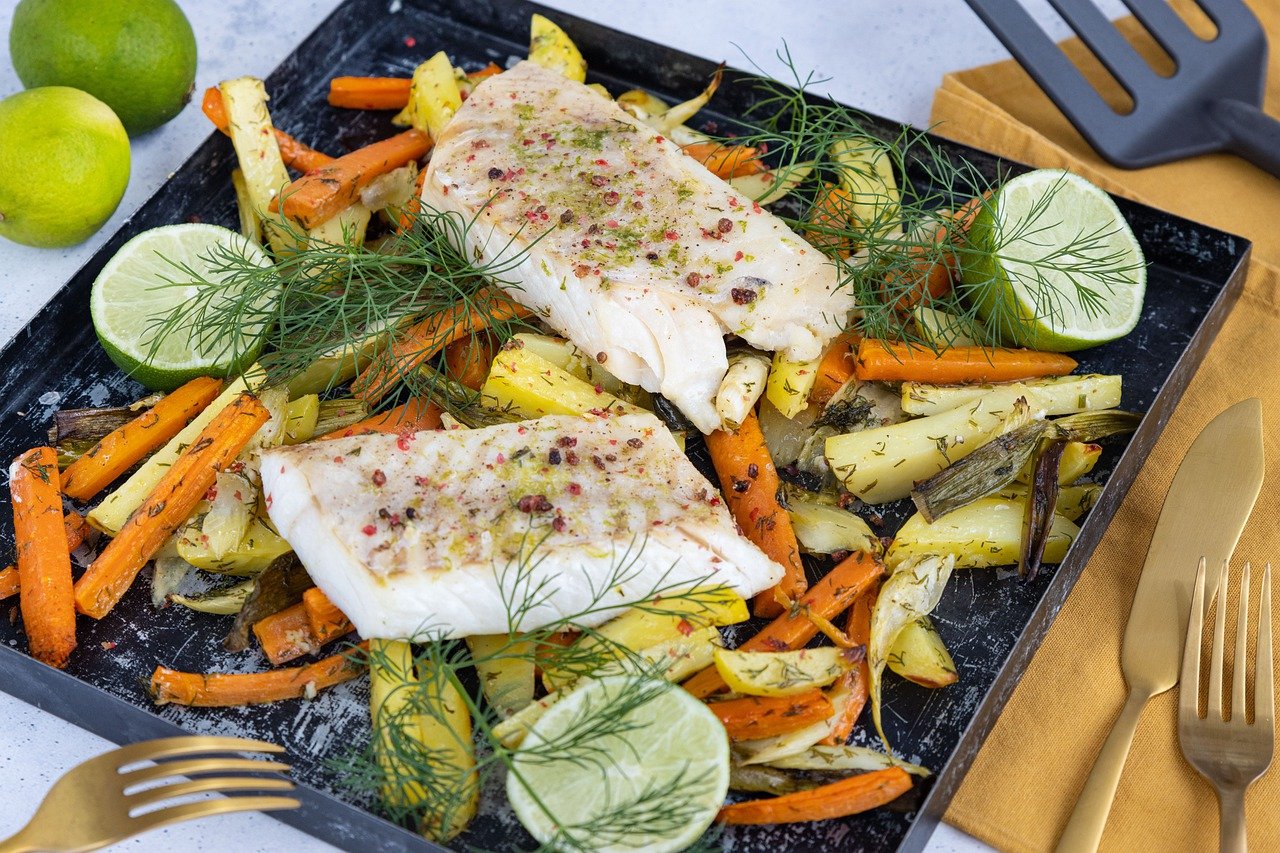
Consulting with a Veterinarian
When it comes to your pet's health, there's no room for guesswork, especially when considering the introduction of raw bones into their diet. Consulting with a veterinarian is crucial for several reasons. First and foremost, every pet is unique, and what works for one might not be suitable for another. Your vet can assess your pet's individual health needs, dietary restrictions, and any pre-existing conditions that could influence their ability to safely consume raw bones.
Moreover, veterinarians can provide valuable insights on the types of bones that are best suited for your furry friend. For instance, certain breeds may be more prone to dental issues or digestive problems, making it essential to tailor their diet accordingly. A vet can recommend specific sizes and types of bones that not only enhance your pet's health but also minimize risks such as choking or splintering.
It's also important to discuss the frequency and portion sizes of raw bone consumption. Overindulgence can lead to gastrointestinal upset or other health complications, so your veterinarian can help you establish a balanced approach. They might suggest starting with small amounts and gradually increasing the quantity as your pet adjusts, ensuring that their digestive system can handle the new addition without any hiccups.
In addition to dietary advice, your vet can also monitor your pet's overall health during routine check-ups. If you notice any signs of discomfort or unusual behavior after introducing raw bones, your vet can help you troubleshoot the issue. This proactive approach can save you from potential emergencies down the line.
Lastly, don't hesitate to ask your veterinarian any questions you might have about raw bones. Here are some common inquiries that pet owners often pose:
- What types of raw bones are safe for my pet?
- How often should I give my pet raw bones?
- Are there any signs of distress I should look for?
- Can raw bones replace my pet's regular food?
In conclusion, while raw bones can be a fantastic addition to your pet's diet, consulting with a veterinarian ensures that you're making informed decisions that prioritize their health and safety. Your vet is your best ally in navigating the sometimes murky waters of pet nutrition, helping you create a diet that is not only enjoyable for your pet but also supports their long-term well-being.
Here are some common questions pet owners have about raw bones:
- Are raw bones safe for all pets? - Not all pets can safely consume raw bones. Consult your vet for personalized advice.
- How do I know if my pet is allergic to raw bones? - Watch for signs of digestive upset or allergies, and consult your vet if you notice anything unusual.
- Can puppies eat raw bones? - Puppies can benefit from raw bones, but consult your vet for appropriate types and sizes.
- What should I do if my pet chokes on a bone? - If your pet is choking, seek immediate veterinary assistance.
Frequently Asked Questions
- What are the nutritional benefits of raw bones for pets?
Raw bones are packed with essential nutrients like calcium, phosphorus, and trace minerals that are vital for your pet's growth and overall health. Incorporating them into your pet's diet can help support strong bones and a balanced nutritional intake.
- How do raw bones improve dental health?
Chewing on raw bones acts like a natural toothbrush, helping to remove plaque and tartar buildup from your pet's teeth. This not only promotes healthy gums but also contributes to fresher breath, making playtime and cuddles even more enjoyable.
- Can raw bones prevent gum disease?
Absolutely! Regular chewing on raw bones can significantly lower the risk of gum disease in pets. By keeping their teeth clean and gums healthy, you can help prevent serious health complications down the line.
- What are the signs of gum disease in pets?
Keep an eye out for early warning signs like bad breath, swollen gums, or difficulty eating. If you notice any of these symptoms, it might be time to introduce raw bones into their diet to help combat the issue.
- How do I choose the right bones for my pet?
Selecting the right bones is crucial for safety and health benefits. Consider your pet's size, the type of bone, and whether it's raw or cooked. Always opt for bones that are appropriate for your pet's chewing habits to avoid any choking hazards.
- Are there safety guidelines for feeding raw bones?
Yes, there are important safety guidelines to follow! Always supervise your pet while they chew on bones, and ensure they are large enough to prevent choking. Also, avoid cooked bones, as they can splinter and cause serious digestive issues.
- How do raw bones aid in digestion?
Raw bones can enhance your pet's digestive health by providing natural enzymes and promoting healthy gut flora. This is essential for efficient nutrient absorption, helping your furry friend feel their best.
- What are the benefits of bone marrow?
Bone marrow is a nutrient-rich source of fats that can boost your pet's energy levels when consumed in moderation. It's a tasty treat that can contribute to their overall health and vitality.
- What are the potential risks of feeding raw bones?
While raw bones offer many benefits, there are risks to consider, such as splintering or choking. It's crucial to be aware of these risks and take preventive measures to ensure your pet's safety while enjoying their bones.
- Should I consult my veterinarian before giving my pet raw bones?
Yes, it's always a good idea to consult with your veterinarian before introducing raw bones into your pet's diet. They can provide tailored advice based on your pet's health needs and ensure that you're making safe choices for your furry friend.

